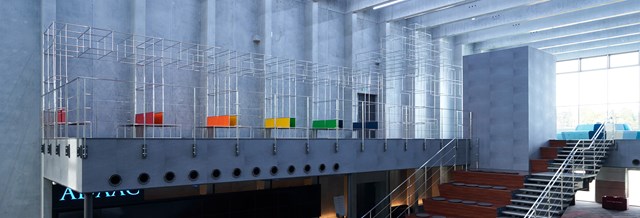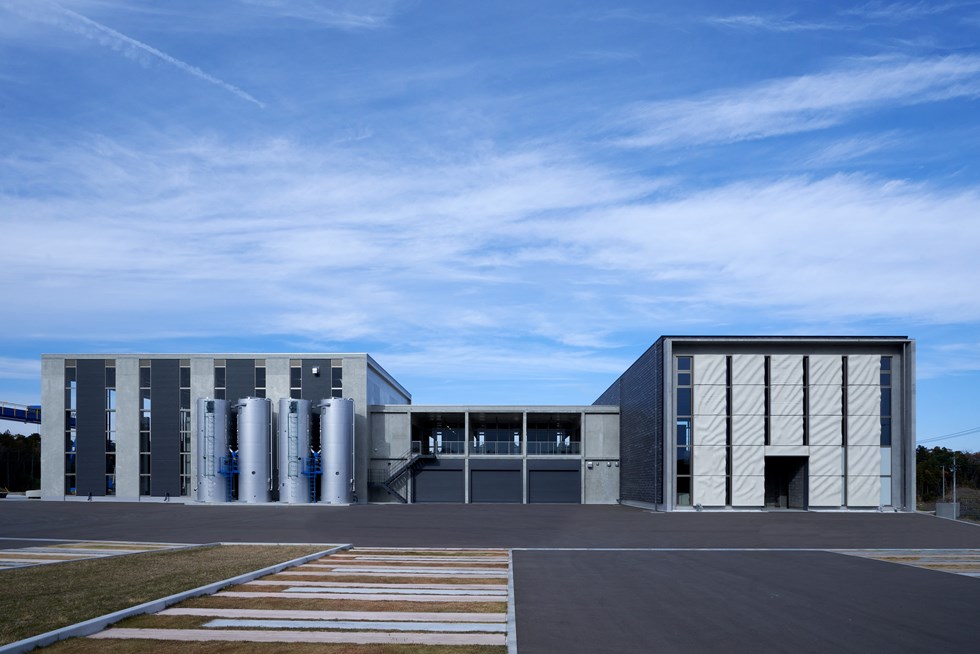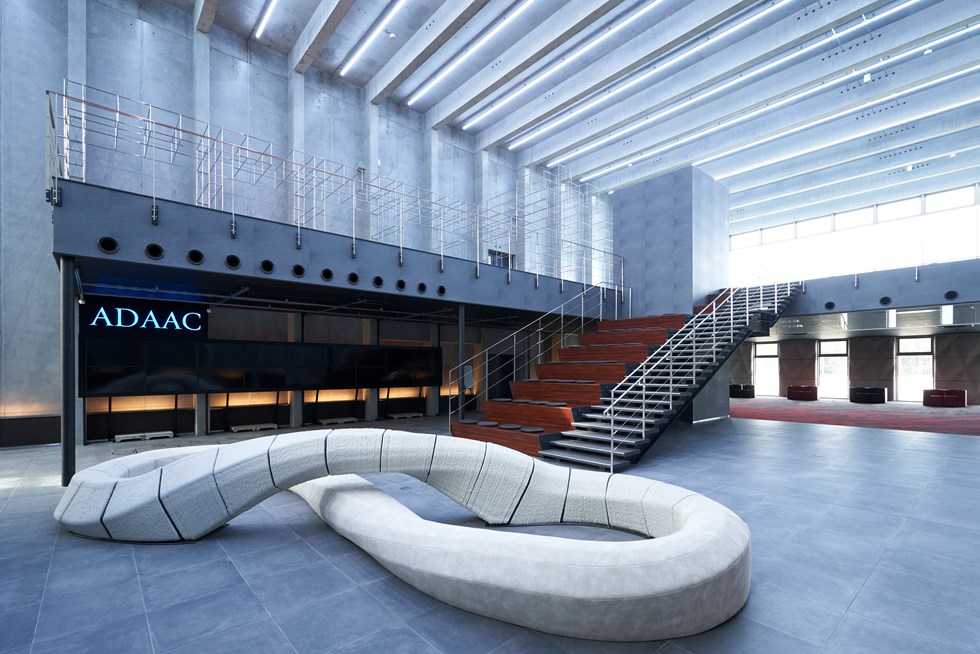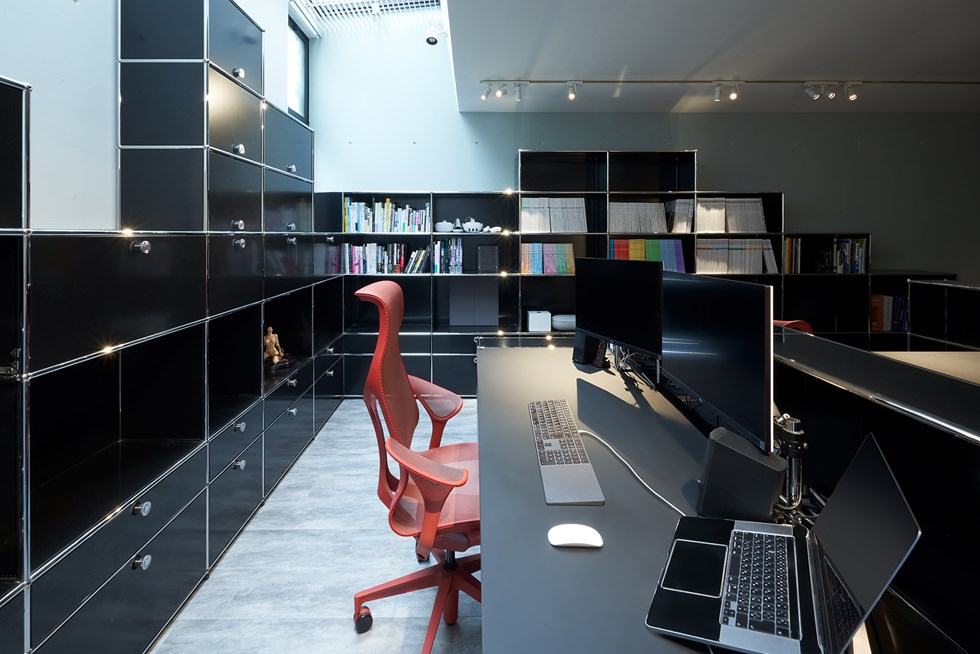An innovative encounter between design and architecture
Fukushima and Tokyo, Japan
In the heart of a region that is once again looking to the future after the 2011 disastrous earthquake, the Fukushima RDM Center, completed in 2023, is a perfect synthesis of the expertise and vision of Taishi Aizawa, a Japanese architect with a passion for avant-garde design.
Taishi Aizawa is the Vice President of Aizawa Concrete Corporation, a family-run company founded in Hokkaido in 1935. In 2021, he established ADAAC (Aizawa Designers and Architects Collective), an innovative platform dedicated to architecture and design.
Taishi Aizawa's work is characterised by an original confluence between his background in architecture, his expertise in digital technology and a passion for USM Haller furniture, which is at the heart of his creations.
The Fukushima RDM Center is a perfect illustration of this vision. This building uses high-quality pre-stressed concrete to create vast spaces with no pillars. Located in Namie in Fukushima prefecture, it is intended to become a creative hub, designed to encourage exchange and creation.
Here, one of the spaces houses a huge USM Haller structure designed as a work of art.
‘In this building, we’ve created areas where people can gather and share ideas, using the furniture to give each space a theme. USM Haller, for example, was used to design a structure inspired by sea spray as an extension to a sofa whose shape evokes the sea. Part of the structure is also fitted with seats in different USM colours. We deliberately left it without panels, except for the seats, and have not fitted it with storage. By taking advantage of USM's modularity, we were able to design this unique installation that integrates perfectly with the concrete walls,’ explains Taishi Aizawa.
Using USM Haller furniture in his own workspace at ADAAC allowed Taishi Aizawa to better understand its features and possibilities, resulting in this meticulously designed three-dimensional configuration.
‘Although I often see unique configurations of USM Haller furniture internationally, few examples exist in Japan. We want to continue to explore this. Anything is possible depending on the idea! Here, the architecture is grandiose, so it's essential the furniture is up to the task, and not overshadowed,’ he adds.
Another striking feature of the Fukushima RDM Center space is the gigantic ‘Mobius’ object, which doubles as a bench. Inspired by the painter Maurits Escher, who left behind many fantastic works, this piece has an octagonal section that twists to form the ‘∞’ (infinity) sign, symbolising all the future possibilities to come for the city of Namie. Half of the material is 3D printed concrete, and the other half is fabric. Seamlessly connecting the two materials to create a complex shape required new technology, from design to production.
Taishi Aizawa sees concrete as a material that needs to be reinvented through proposals adapted to an era with the emphasis placed on sustainability. By extending the life of concrete and exploring new applications, he envisages a future in which this traditionally utilitarian material becomes a symbol of sustainability and design innovation.
Values that resonate particularly closely with those of USM!
‘My attraction to USM Haller furniture stems from my experience at TeamLab (a renowned digital art company where he began his career). Furniture that’s both elegant and modular, while retaining a remarkable simplicity. I've always dreamed of designing a space entirely dedicated to USM Haller,’ he says.
In a way, this is what he did when he designed the ADAAC offices, a space in which he gave free rein above all to his creativity.
‘This space is both my workplace and an aesthetic achievement. Every time I look at it, I find it truly impressive. I really appreciate the functionality of the USM Haller System, but the essence of my design is to start with the overall shape and then integrate the desired functionality,’ he explains.
It's a nod to architect Louis Sullivan's expression ‘Form follows function’, which the USM Haller system makes possible thanks to its ingenuity and immense modularity!
Find out more:
ADAAC
Fukushima RDM Center
Aizawa Concrete Corporation
Photo: Tadahiko Nagata
You too can give free rein to your creativity by sharing your ideas with the experts in our showrooms and sales partners to create a unique piece of furniture.
If you want to purchase a USM Haller piece yourself design it now in our online configurator, or find your local sales partner here.
















